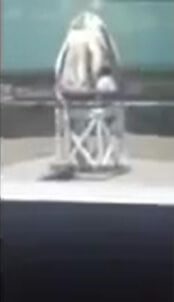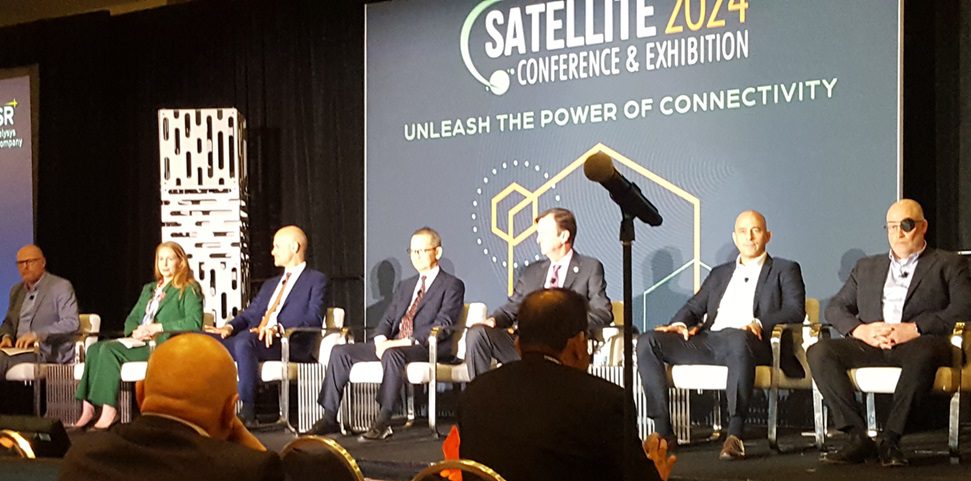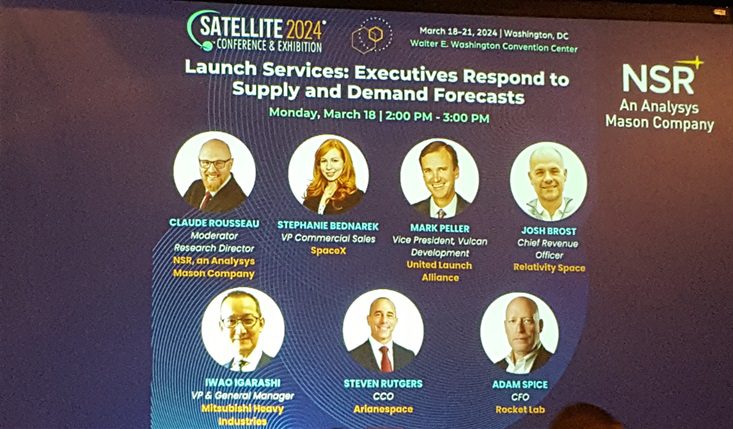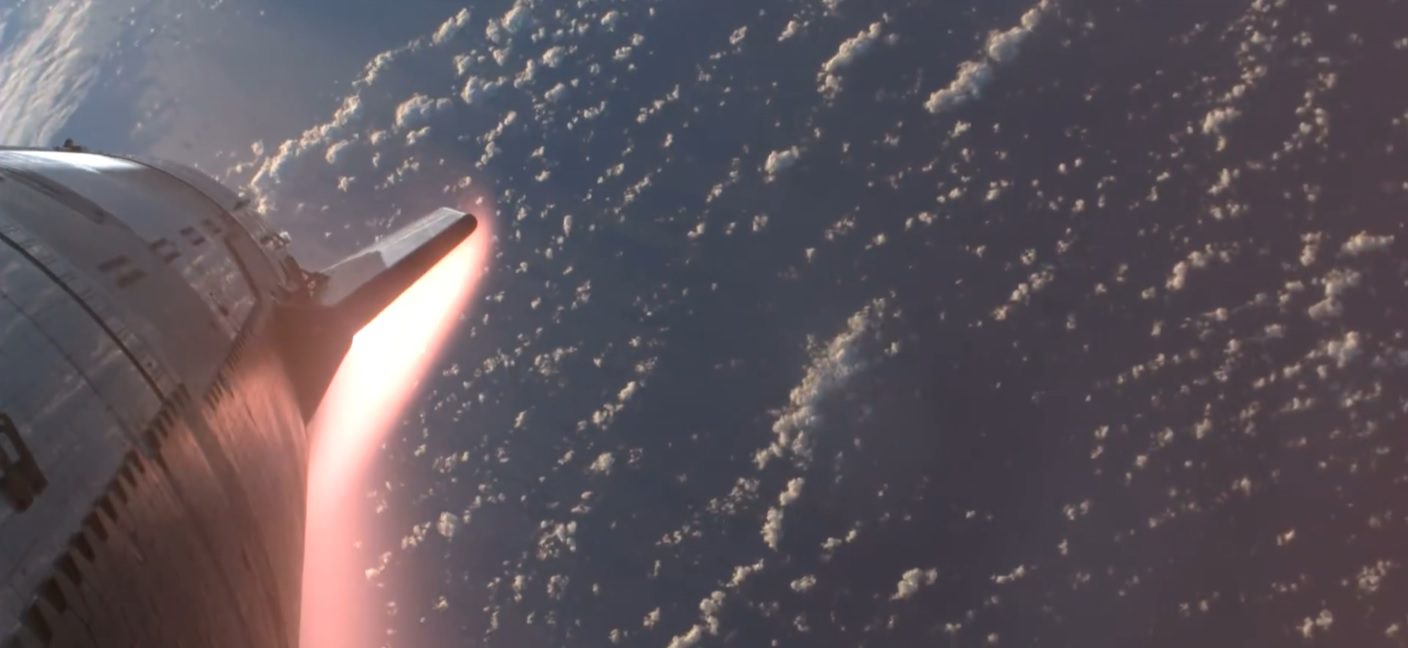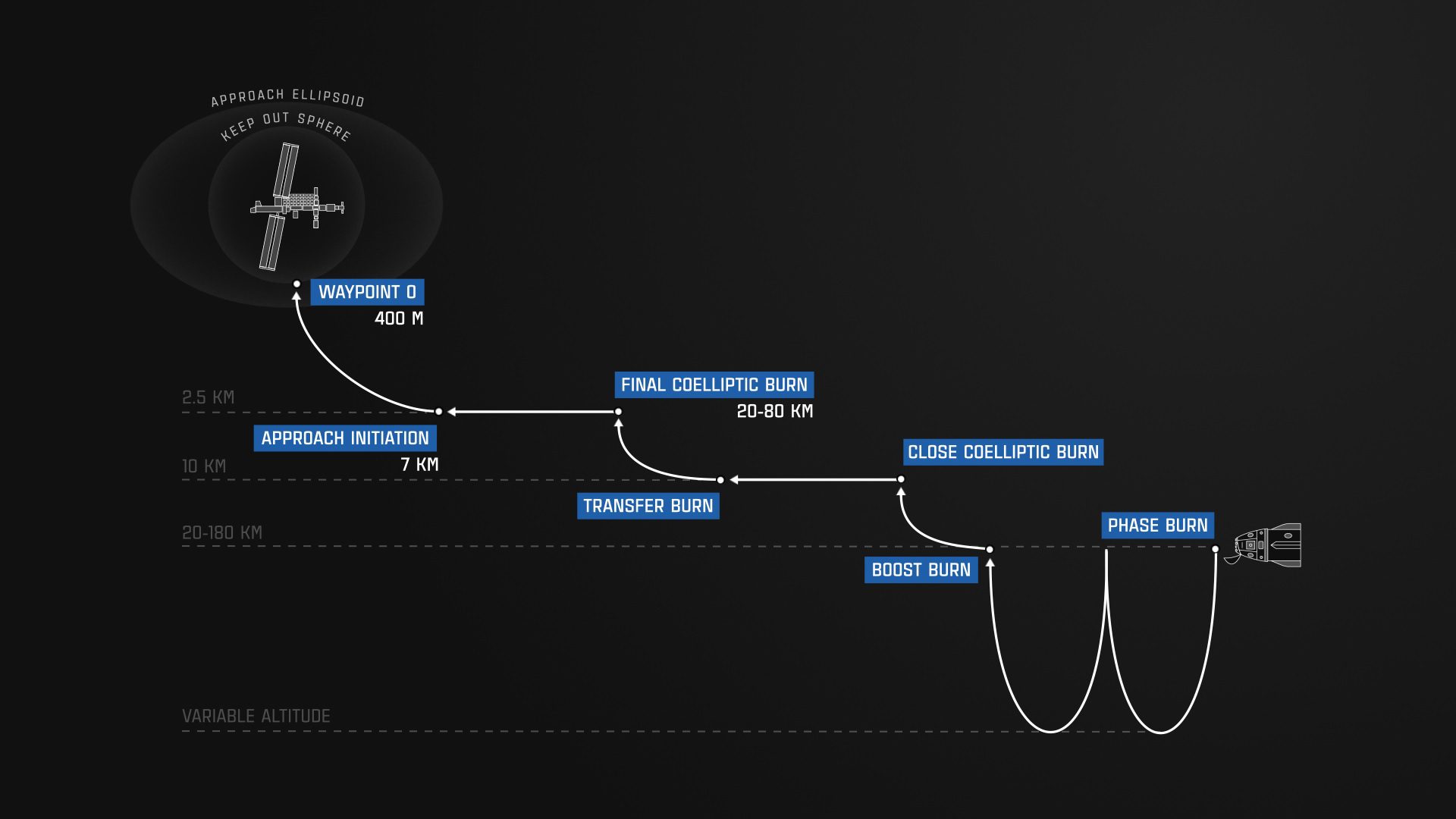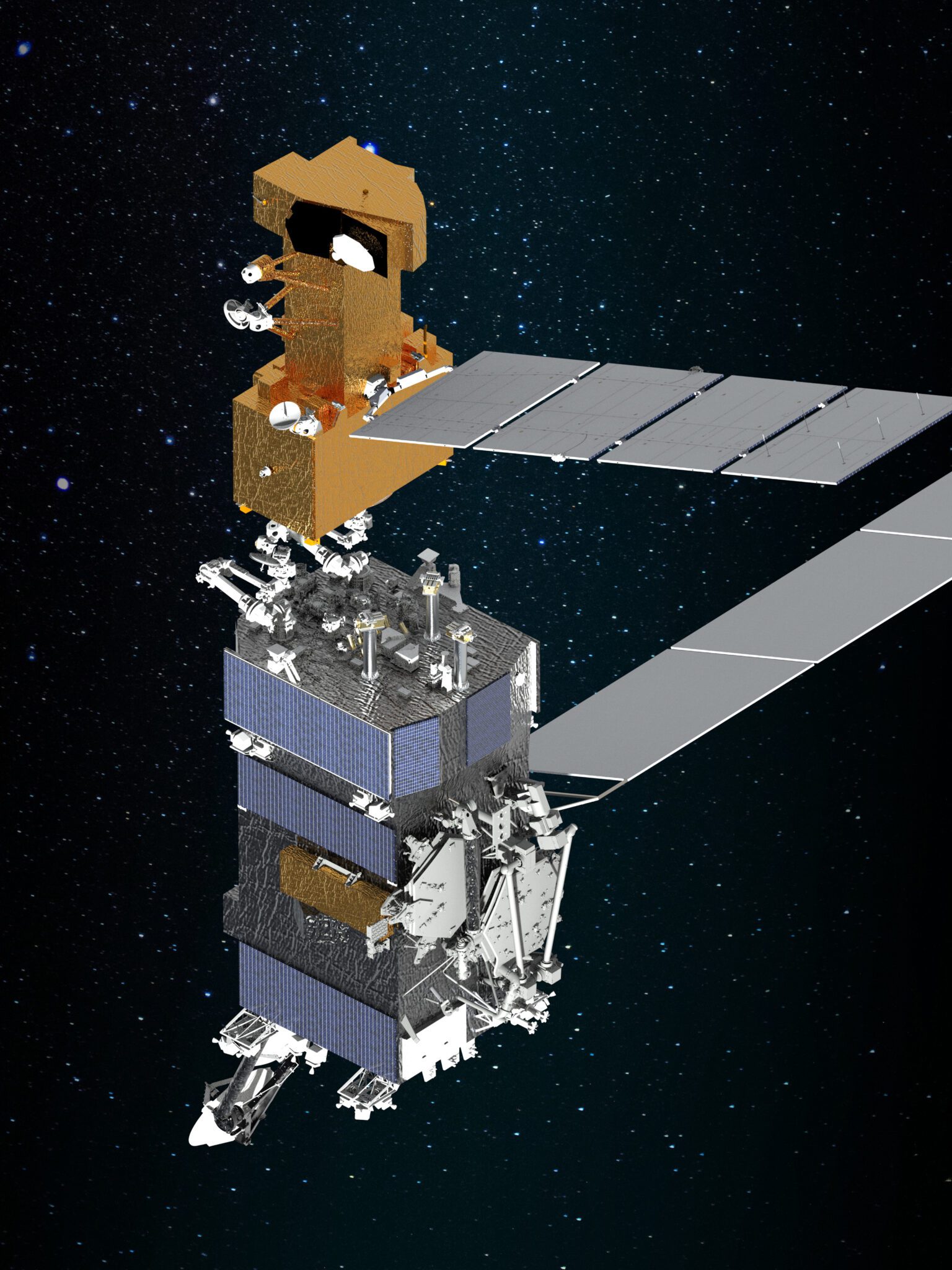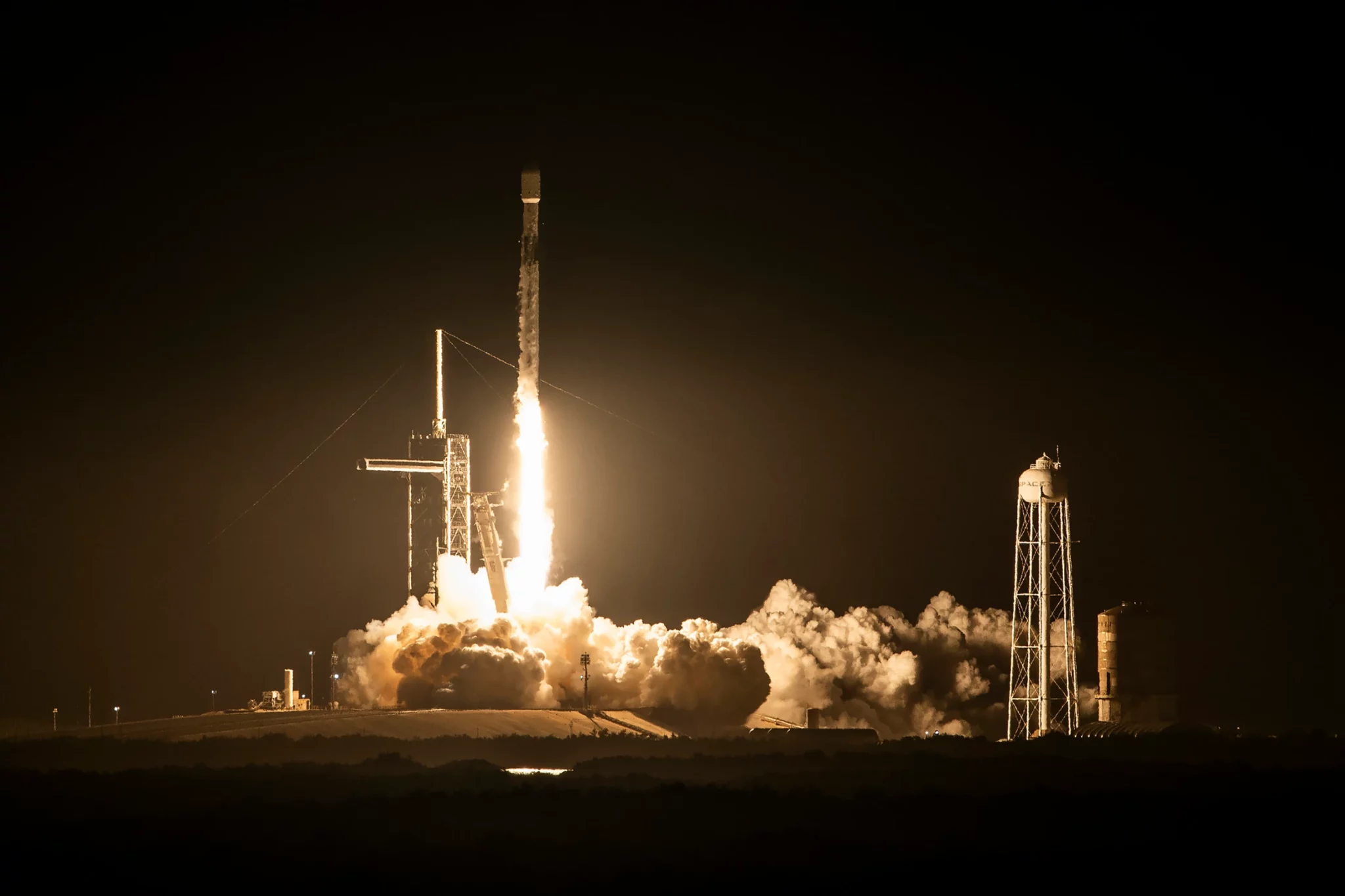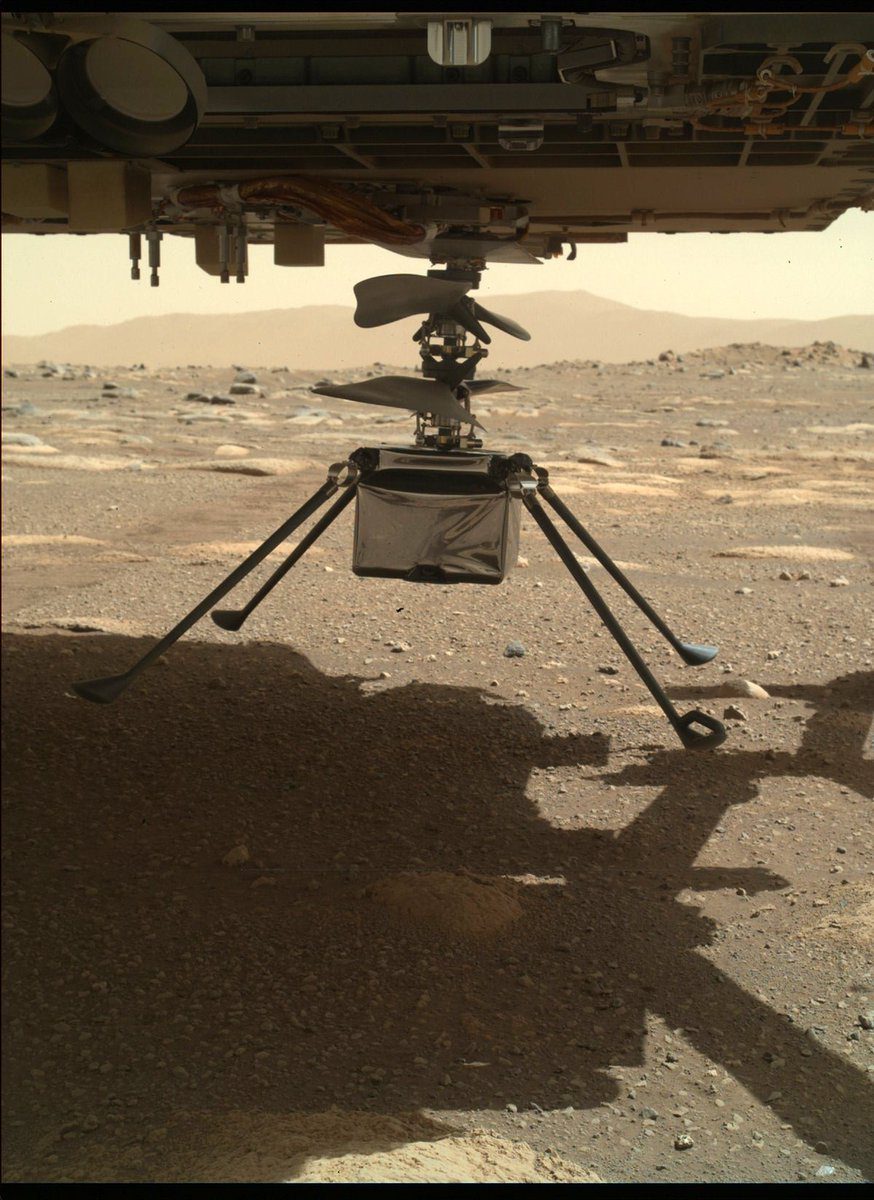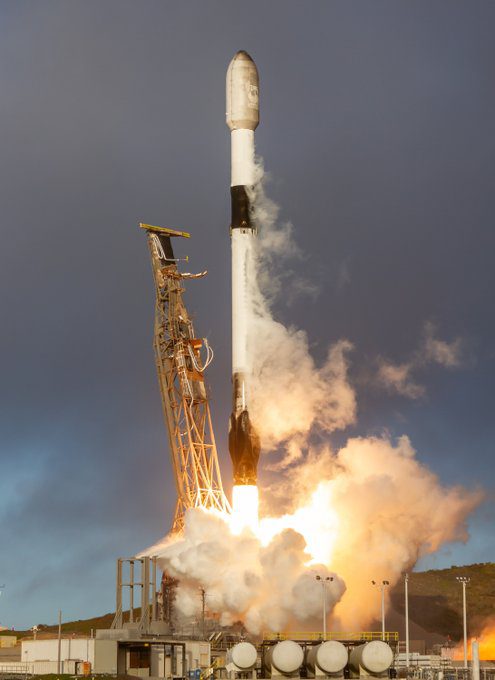The delayed unmanned launch, docking and recovery of the SpaceX Crew Dragon DM-1 capsule went without a hitch when it finally happened in March, but disaster has since struck the capsule – and with it, NASA’s plan to fly astronauts on a new Crew Dragon in July. NASA’s Administrator Jim Bridenstine noted via Twitter that the reused capsule had experienced an anomaly during a ground test on 20 April. In fact, during a test firing of the eight SuperDraco thruster system at a test site at Landing Zone 1 (LZ-1) in Cape Canaveral, Florida, the DM-1 capsule was blown to pieces.
The SuperDraco engines use the poisonous hypergolic (ignition-on-contact) rocket propellant combination Hydrazine and Nitrogen Tetroxide, and a pall of orange vapour was seen rising from the site after the explosion.
Grainy film footage has since emerged of a dramatic test stand failure in which the capsule appears to have exploded into many pieces. This footage has not yet been verified, but it looks convincing and is likely to put off anyone planning to fly on Crew Dragon…possibly forever. See it here.
Update on 10 May: It has been confirmed by SpaceX that the catastrophic failure did occur, and that the explosion occurred about 0.5 seconds before ignition of the SuperDracos took place.
This catastrophic failure is likely to set back the Crew Dragon (aka Dragon 2) design by at least a year and may even end the programme completely. The reusable DM-1 had been planned to take part in tests of the Crew Escape System before the crewed flight in July – although the latter was already looking likely to slip to October. Both will now inevitably be delayed, probably until next year.
Nearer term, the debris covering the LZ-1 area and the need to recover parts of the capsule to determine the cause of the failure mean that it will not be used to recover the first stage of the next unmanned Dragon cargo mission, which was due for launch on 30 April. Instead, SpaceX intends to park a drone landing ship close to the shore of Cape Canaveral on which it can land. It has applied for a licence change to do this.
Comment by David Todd: Instead of slightly redesigning the original and very successful Dragon cargo capsule so that it could carry crew, Elon Musk decided to build an entirely new design, which was originally supposed to use its powerful “SuperDraco” thrusters to make vertical landings on Earth.
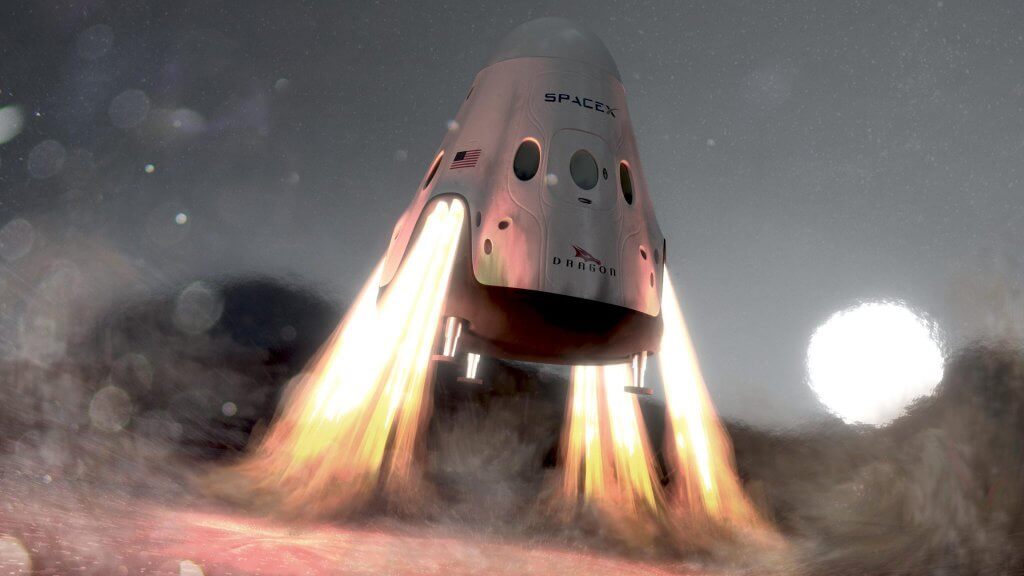
Red Dragon was to have used its Superdraco thrusters to make a propulsive landing on Mars. Courtesy: SpaceX
The idea was that in using this powered landing technique, the Crew Dragon could be made more easily reusable on Earth. Likewise, it was mooted that a derivative Red Dragon variant of the same capsule design might also have been used to land on Mars. The technical difficulties and higher risks of this kind of landing technique (a SuperDraco engine failure at less than 500 feet altitude was probably irrecoverable from) meant that it was soon dropped (excuse the pun). The team reverted to the cargo Dragon’s simpler parachute/splashdown landing recovery method. However, reluctant to start again, Musk stayed with the Crew Dragon capsule design, retaining its partly redundant SuperDraco rocket thrusters’ integral location, albeit that these still had a use as the emergency “pusher” launch escape system.
This writer has never been a fan of the Crew Dragon concept which he regarded as a poor design. By the way, for the superstitious even its Dragon logo was poorly designed, with its “good dragon Feng Shui luck” being struck into by “poison arrows”, which did not bode well.
More seriously, your correspondent originally doubted the wisdom of voluntarily going for “risky” powered vertical landings on Earth. While these were wisely given up, the vestigial integral location of the powerful SuperDraco thruster engines remained – making the design more hazardous than it needed to be. Unlike the small attitude control thrusters normally carried by all spacecraft in their structures (in Crew Dragon’s case, the standard Draco thrusters), the SuperDraco escape engines are significantly larger and use large 3D printed combustion chambers. The 3D printing is probably not a problem, but having such large thrust chambers integrated as part of, or attached to, the capsule wall is – especially as “react on contact” hypergolic propellants were to be used.
Whether the apparent catastrophic structural failure was due to an engine explosion or self-igniting hypergolic propellant leak is not yet apparent (Update on 10 May: it has been confirmed that the failure occurred about 0.5 seconds before ignition of the SuperDracos took place), nevertheless, their side-of-wall location would inevitably have exacerbated the damage.
Having such large rocket engines integral to the structure of an orbit-capable crew capsule/module remains almost unique – and uniquely hazardous. Most other spacecraft mount such large engines on a separate module. Of human carrying orbit-capable spacecraft, only the Apollo lunar module’s integral ascent engine, which used hypergolic propellants, comes to mind as an exception. It could be argued that the Space Shuttle did have integral large Orbital Manoeuvring System (OMS) engines and, of course, its main engines, but these were located well away from the crew compartment.
That said, some suborbital craft do have a large integral rocket feature, including those of Blue Origin’s New Shepard launch escape system and Virgin Galactic’s SpaceShipTwo main engine. However, they don’t use dangerous hypergolic propellants, having instead a solid rocket and hybrid engine, respectively. Nevertheless, it will be something for them to think about.
Despite Musk’s late-in-the-day landing concept change and its riskier-than-necessary design, NASA still chose his Crew Dragon capsule along with another simpler capsule design from Boeing, it its case called the CST-100 Starliner.
Boeing has had its own problems involving valves leaking liquid propellants on the CST-100 Starliner pusher rocket launch escape system. Unlike the Crew Dragon, its large hypergolic propellant pusher thrusters are more safely located on a kind of service module, rather than on the crew capsule itself.
Now that both Dragon and its Boeing counterpart are so long delayed, most notably by problems with their hazardous pusher escape systems, the error of choosing both has become fully apparent – well, that and retiring the Space Shuttle about four years too early (and not choosing the close Shuttle-derivative Sidemount instead of SLS). It would have been more logical for NASA to have chosen just one of these crew-carrying capsule designs (probably Boeing’s) along with the ostensibly slower-to-develop, but more advanced, horizontal landing mini-shuttle Dreamchaser design, built by Sierra Nevada. Admittedly, this has a Shuttle-style integral OMS engine system that uses the propane/nitrous oxide propellant combination which is technically non-hypergolic having the ignition triggered by the catalytic decomposition of the nitrous oxide. As it is, Dreamchaser’s horizontal landing ability and cross range capabilities does offer it considerable operational and safety advantages.
While Sierra Nevada unsuccessfully appealed against the original decision, it was thrown a lifeline by NASA via its CRS2 contract, which part-funded its Dreamchaser cargo version. Interestingly it has been revealed by nasaspaceflight.com that work quietly continues on a crewed version of the mini-shuttle. This could allow it to step into a NASA crew vehicle contract, if the Crew Dragon has to leave the field.
Meanwhile, the beneficiary of NASA’s original mistake has been, and will be, the Russian space programme, which charges NASA exorbitant fees – now more than US$80 million a seat – to get its astronauts into orbit on their Soyuz capsules and rockets.
The Russians’ simpler and more reliable solid rocket “puller” (tractor) crew escape system, mounted above the Soyuz orbital and descent capsule, are well proven, not least in saving the crew of Soyuz MS-10 last year.
Elon Musk is a great designer and SpaceX is an innovative company, both of which deserve NASA’s support – especially with SpaceX’s revolutionary Starship/Super Booster interplanetary design. Nevertheless, the hazardous Crew Dragon should probably be dropped. It is just too risky to put humans on.
Update in May 2019: It has been revealed by NASA that an air-dropped inflation test in April parachutes to be used on the Crew Dragon ended in failure. One parachute was deliberately failed, but the other three parachutes on a test sled also failed to inflate as expected resulting in a heavy impact for the sled.

